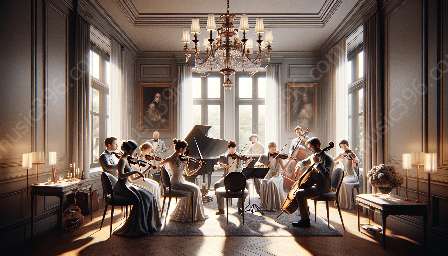Classical music is renowned for its intricate melodies, harmonies, and embellishments. One of the key elements that define the artistry of classical music is musical ornamentation. This article delves into the concept of musical ornamentation in classical music, its relevance to classical music skills and techniques, and its contribution to the rich tradition of classical music.
The Concept of Musical Ornamentation
Musical ornamentation refers to the practice of adding embellishments, variations, and flourishes to a musical composition. These embellishments serve to enhance the expressiveness and beauty of the music, adding depth and complexity to the melodic lines and harmonies. Ornamentation can be applied to both solo instrumental performances and ensemble compositions, allowing musicians to showcase their technical prowess and interpretive abilities.
Types of Musical Ornamentation
There are various types of musical ornamentation, each with its own distinctive characteristics and historical significance. Some of the most common types of ornamentation in classical music include trills, mordents, turns, appoggiaturas, and grace notes. These ornaments are notated using specific symbols and markings in the musical score, providing guidance to performers on how to interpret and execute them.
Relevance to Classical Music Skills and Techniques
The incorporation of musical ornamentation in classical music requires a high level of technical skill and proficiency. Musicians must possess a deep understanding of historical performance practices and stylistic conventions to effectively execute ornamentation in a manner that aligns with the composer's intentions. Furthermore, mastering the various techniques associated with ornamentation, such as rapid fingerwork, controlled dynamics, and nuanced phrasing, is essential for achieving an authentic and compelling performance.
Interpretive Opportunities
Ornamentation in classical music offers performers a platform for artistic interpretation and personal expression. While the basic structure of a musical composition remains constant, the inclusion of ornaments allows musicians to infuse their own creativity and individuality into the performance. This interpretive freedom enables musicians to imbue the music with an emotional depth and spontaneity that resonates with listeners, fostering a profound connection between the performer, the music, and the audience.
Tradition and Innovation
Throughout the history of classical music, ornamentation has been an integral part of musical traditions and performance practices. From the intricate embellishments of the Baroque era to the ornate flourishes of the Romantic period, ornamentation has evolved and adapted to reflect the stylistic preferences and artistic visions of different composers and musicians. Furthermore, contemporary performers continue to explore new approaches to ornamentation, integrating traditional techniques with modern interpretations to breathe fresh life into cherished masterpieces.
Conclusion
Musical ornamentation is a fundamental aspect of classical music that enriches the sonic tapestry of compositions, challenges musicians to refine their technical abilities, and invites them to engage in meaningful artistic expression. By understanding the concept of ornamentation, honing classical music skills and techniques, and embracing the legacy of classical music, performers can continue to uphold the artistry and tradition of this timeless musical genre.

































